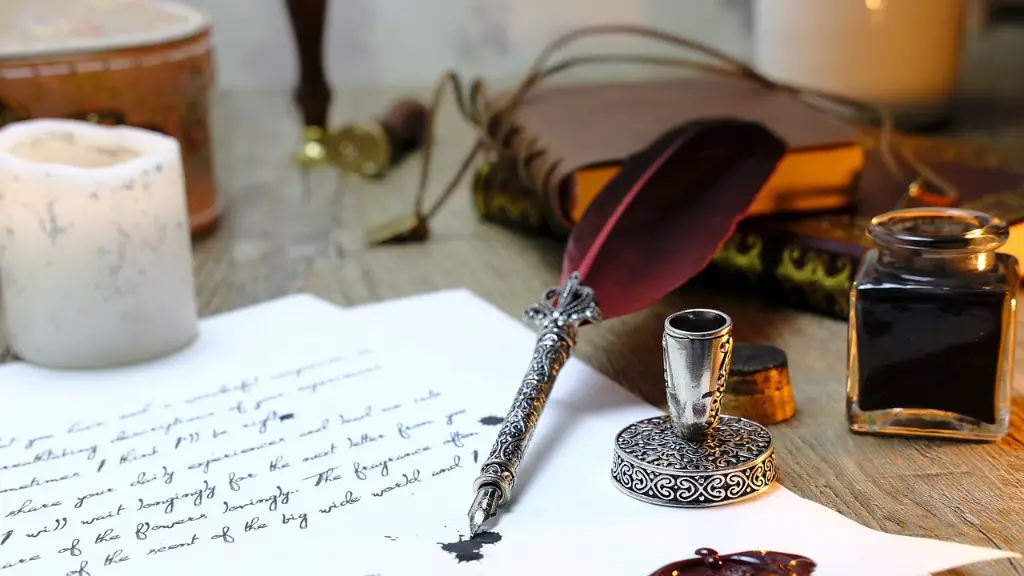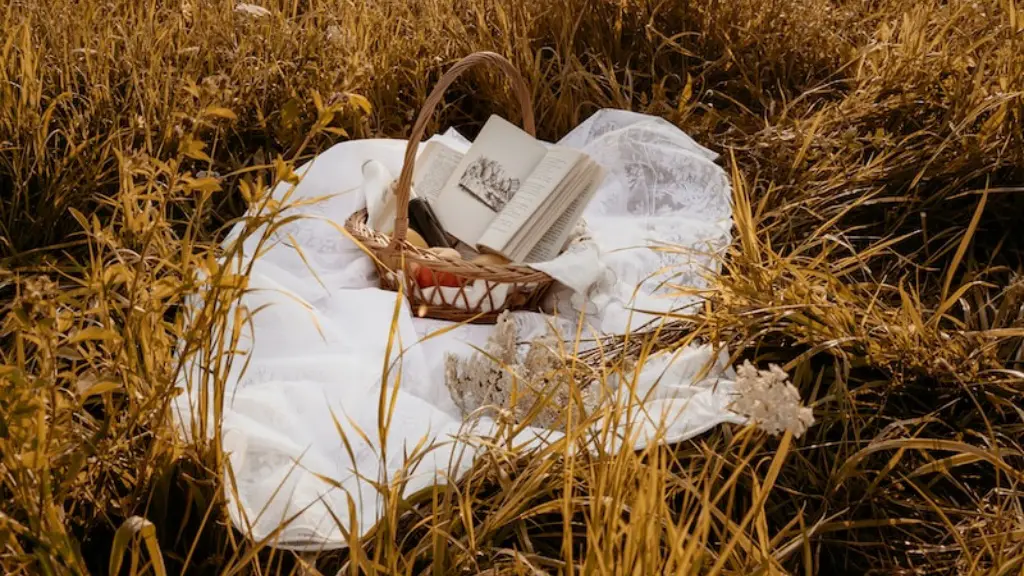Introduction
Writing a comparison essay between two poems can be an interesting task. It requires a student to be creative and think outside of the box. Although poetry comparison might seem overwhelming and daunting, once you understand the basics of comparing two poems, the task suddenly becomes much easier. This article aims to provide students with a comprehensive guide on how to write a poetry comparison essay, offering key tips and providing example essays for inspiration.
What is a Poetry Comparison Essay?
A poetry comparison essay is a type of essay in which the student is asked to compare two different poems of their own choosing, analyzing and critiquing each one. The poems should share some common theme or concept, yet still have many differences that the student should explore and compare. Generally, the student should draw upon their own knowledge and research to make comparisons between both poems.
Key Considerations
When writing a poem comparison essay, there are several key things to consider. Firstly, the student should think about the overarching theme or concept of the both poems, as this will most likely be an aspect they will need to focus on when comparing. Furthermore, the student should think about the structure of the poems, taking into account the layout, the rhyming patterns, and other literary elements such as alliteration and repetition. Additionally, use of language, imagery and symbolism should also be taken into account.
Comparing Language in Poems
When comparing two poems, one of the key aspects that the student should consider is the language used within each one. Generally, they should try to notice any patterns of language and note these down, thinking about how the various elements of language such as metaphors, similes and personification add to the effect of the poem. Additionally, the use of dialogue, structure and sounds can be used to compare the two poems, and how these elements help to convey the theme or emotions.
Analyzing Imagery and Symbolism in Poems
When comparing two poems, students should also be looking closely at the imagery and symbolism that is used within the poems. Imagery refers to any kind of mental image, description or figure of speech that has a referential meaning—namely, it refers to something else in order to help convey the subject. For example, a poem might use imagery of a flower to symbolize growth, or the use of tools to symbolize hard work. Symbolism, on the other hand, is an object or image that stands for something that it doesn’t literally symbolize. It can be used to add an extra layer of meaning to a poem.
Key Comparisons in the Poems
When comparing two poems, it is important to look at their similarities and differences. Generally, the student should look at common themes and imagery, as well as similarities in style and structure. It is also important to note how each poet has used language, imagery and symbols differently to convey their messages and feelings. Additionally, the student should think about how the structure of verbal and nonverbal elements impacts the overall message of the poem.
Example of a Poetry Comparison Essay
When writing a poetry comparison essay, an example can be useful. Taking a look at the following example from a student’s A-Level English Literature essay:
In this essay, I shall be comparing and contrasting two poems: “The Road Not Taken” by Robert Frost and “The Listeners” by Walter de la Mare. Firstly, I shall be exploring the theme of choices in both poems. In “The Road Not Taken”, Frost has created a poem about the power of decision making, whereas “The Listeners” offers a less optimistic view on the consequences of choices. Both poems use vivid imagery to convey their respective messages. For example, “The Road Not Taken” uses the image of two roads to symbolize the difficult choices we make in life, while “The Listeners” uses the image of an empty house to represent the loneliness and confusion of not knowing which direction to take. The use of structure is also important in these two poems. Frost has used rhyming couplets to explore the theme of choices, while de la Mare adopts a more open, free-verse style. Both poets also use a similar range of language throughout their poems, with words such as “forlorn” and “darkness” being used to create a sense of loneliness and uncertainty. Ultimately, both poems explore similar themes in inventive, yet different ways.
Applying the Analysis
When writing a comparison essay between two poems, it is important to consider the key aspects discussed in the article, such as the theme, language, imagery and symbolism of each poem, as well as the structural elements. It is also important to apply the analysis to the essay, noting any relevant similarities or differences as you go. Additionally, the student should support their analysis with relevant evidence, such as quotes and examples, to ensure that the essay flows smoothly and that all aspects are covered.
Writing Style
When writing a comparison essay, it is important to ensure that the writing style is formal and direct. Generally, the student should not use overly complex sentences to ensure that the reader can understand the points that they are trying to make. Additionally, it is important to avoid the passive voice and use the active voice instead. This can help to ensure that the essay is succinct and that all points are clear and concise.
Explore Poems
When writing a poetry comparison essay, it is important for the student to take time to explore the chosen poems. Generally, the student should spend time looking at the different aspects of each poem in order to gain an understanding of the theme and ideas that the poet has tried to convey. Additionally, they can also look at reviews and interpretations of the poems in order to gain further insight into the meaning of both texts.
Bring in Outside Sources
When writing a comparative essay, it can be a good idea to bring in outside sources in order to provide a wider perspective on the chosen poems. Generally, this will involve looking for scholarly articles or reviews that have been written about the particular poems, and using these to provide further insight into the meaning and theme of the text. Additionally, the student should also look for any critical analysis that has been written in order to gain interesting perspectives from other experts in the field.
Organize Your Essay
When organizing the essay, the student should ensure that the essay is well structured and organized. Generally, a good structure for the essay should include an introduction, body paragraphs and a conclusion. Additionally, the body of the essay should be divided up into two sections, one analyzing each poem individually, and one section comparing both poems. This can help to ensure that all relevant points are covered, and that the essay flows smoothly.
Proofreading and Editing
Finally, before submitting the essay, it is important to ensure that the student proofreads and edits the essay thoroughly. Generally, editing should involve re-reading the essay to check for any inconsistencies in the argument, as well as any spelling or grammar errors that may have been overlooked. Additionally, the student should also use a spellchecker and a grammar checker to ensure that the essay is perfect.
Conclusion
In conclusion, writing a poem comparison essay can be an interesting and challenging task for students. By understanding the key considerations discussed in this article and taking note of the example essay, students should be well on their way to writing a successful comparison essay. It is also important to take time to explore the chosen poems, bringing in outside sources to provide a wider perspective. Additionally, the student should ensure that the essay is well organized, and that they proofread and edit it thoroughly before submitting.



